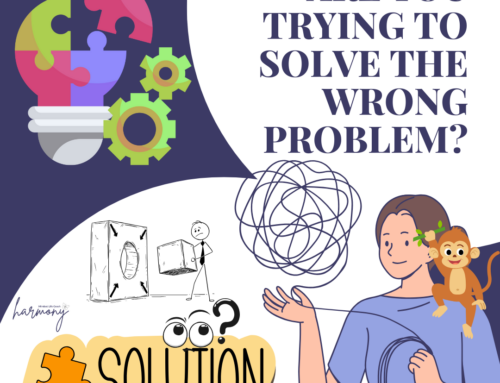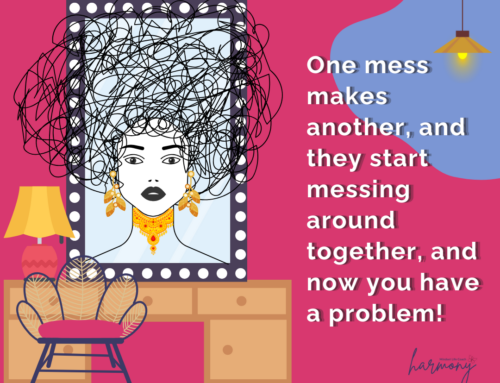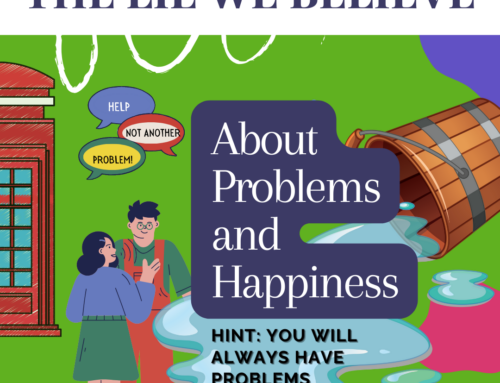You Might Need to Step Back – To Move Forward
You know that moment when you’re trying to untangle a knot, and the harder you pull, the tighter it gets? Yeah, that happens when we stare at a problem too long. We get so close to it, so tangled up in the details, that we can’t see what we’re dealing with. It’s like trying to read a book with your nose pressed against the page.
I learned this the hard way.
It’s not that I’m so smart; it’s just that I stay with problems longer.” Albert Einstein
I Hit the Wall
Years ago, I hit a wall. I was exhausted, frustrated, and convinced I needed to quit everything—work, relationships, maybe even civilization. (Okay, that’s dramatic, but I was Googling off-the-grid cabins.)
Everything felt wrong, but I couldn’t figure out why. Was it my work? My environment? Other people? The world? Myself? My mind felt like a plate of spaghetti—everything tangled together.
Then, a friend asked me one question:
“What would change if you walked away from all of it?”
Opening my mouth to answer, nothing came out. I realized I didn’t know what I was trying to escape.
I was tired, but of what?
I was frustrated, but why?
I was making massive life decisions based on feelings I hadn’t defined yet.
That’s when I realized I wasn’t looking at a problem. I was looking at all my problems at once. No wonder it felt impossible to solve.
I needed to step back.
Easier Said Than Done
Stepping back sounds great. But when the problem seems urgent or personal—when it’s affecting you, your work, or people you love—who wants to step away? It’s a drama with you as the star.
It feels counterintuitive, like avoidance; everything will fall apart if you stop thinking about it.
I get it. I do.
But stepping back isn’t avoiding the problem—it’s the only way to see what’s real.
So, let’s define what that means.
What Does It Mean to Step Back?
Stepping back is not:
❌ Running away from the problem
❌ Shutting down and pretending it doesn’t exist
❌ Avoiding action because it feels too big ( I like hanging out here personally!)
Stepping back is:
✅ Creating space between you and the problem so you can see it clearly
✅ Giving your brain time to move from panic mode to clarity mode
✅ Separating what you feel from what’s happening
It’s about getting enough distance to see the shape of the thing you’re dealing with—instead of just feeling tangled inside.
How to Step Back (Even When Your Mind Won’t Let You)
When your brain is spinning, and you feel like you have no choice but to figure this out right now—that’s precisely when you need to step back the most. Here’s how:
1. Change Your Physical Space
Your brain ties thoughts to your surroundings. Move if you’ve been obsessing over a problem in the same place.
🔹 Go outside—fresh air changes your physiology.
🔹 Move your body—walk, stretch, shake off the tension.
🔹 Change locations—a different room, a coffee shop, even just sitting in a different chair.
Sometimes, a different physical environment gives you just enough distance to see things differently.
2. Get It Out of Your Head
When your thoughts stay locked inside your mind, they loop. Getting them out forces clarity.
Write it all down. Don’t try to organize—dump it on the paper full force!
Say it out loud. Talk to yourself, record a voice memo, or tell a friend.
Draw it. If words aren’t working, sketch your feelings, mind-map your thoughts, or scribble nonsense.
Once you can see your thoughts, they stop running in circles.
3. Slow Down Your Breath (So Your Brain Stops Panicking)
Stress speeds up everything—your thoughts, pulse, and need to “fix” things. Slowing your breath tricks your brain into believing the emergency is over.
Try this:
- Inhale for 4 seconds.
- Hold for 4 seconds.
- Exhale for 6 seconds.
- Repeat 3 times.
You’re shifting your brain from fight-or-flight to clear-thinking mode.
4. Zoom Out for Perspective
When you feel stuck in a problem, it fills your whole mental screen. Step back and zoom out:
- Imagine looking at your life from outer space. How big does this problem seem from that far away?
- Will this matter in 5 years? If not, don’t give it 5 days of stress.
- If your best friend had this problem, what advice would you give them? Now, give that advice to yourself.
Perspective isn’t about minimizing your experience—it’s about right-sizing the problem so it doesn’t consume you.
5. Allow Yourself to Not Solve It (Yet)
If you’re in a state of panic, stop trying to solve the problem right now.
Most problems don’t need to be solved immediately—they must be understood first.
🔹 Say to yourself: “I don’t have to figure this out today.”
🔹 Remind yourself: Clarity comes after space, not during stress.
🔹 Trust that Your brain works better in the background.
Let the problem breathe. Give your mind time to process without pressure. Often, the real insight shows up after you step away.
The Morning Light
You’ve probably heard the phrase “sleep on it” a thousand times, but it turns out that’s not just folksy wisdom—it’s solid neuroscience.
When you sleep, your brain isn’t just resting; it’s sorting, filing, and making connections you might not see when you’re awake. Studies in neurology show that during REM sleep, the brain strengthens neural pathways and reorganizes memories, which helps with problem-solving and creative thinking.
That’s why problems that seem impossible at night sometimes feel clearer in the morning—your brain has done some behind-the-scenes troubleshooting while you were snoring.
Psychologically, sleep helps you regulate emotions. When you’re exhausted, everything feels more significant, messier, and urgent than it is.
A tired brain is reactive; a well-rested brain is strategic.
Lack of sleep spikes cortisol (your stress hormone), making it harder to see things rationally. Sleep resets that. It’s like giving your mind a deep breath, creating space between the problem and your reaction to the problem.
Spiritually, many traditions emphasize sleep as a form of surrender—a way of trusting that clarity comes when we stop forcing it. Yogic philosophy reminds us that rest is not the opposite of productivity—it’s part of it.
So, before making a big decision, give yourself the gift of sleep. Let your brain and soul do their quiet work, and see what clarity morning brings.
The Power of Stepping Back
When I finally stepped back from my internal crisis, I saw what I had been missing:
My problem wasn’t my job, environment, or the people around me.
It was the belief that it wasn’t enough, no matter what I did.
And that was the real issue I needed to face.
If I had kept pulling at the tangled mess, I would have made decisions based on confusion.
If I had rushed to solve the “wrong” problem, I would have created new ones.
But stepping back gave me something I hadn’t had in months: clarity.
Try It Right Now
If you’re feeling stuck, your mind is spinning, or your problem feels too big to handle, stop.
Don’t try to solve it yet.
Don’t try to untangle it today.
Just step back.
Breathe. Move. Write. Zoom out. Give yourself space.
Remember, clarity won’t come from pulling harder at the knots.
It comes from stepping back far enough to see where the real problem begins. 💛
The limitations we believe become the reality we experience. We can change that!





